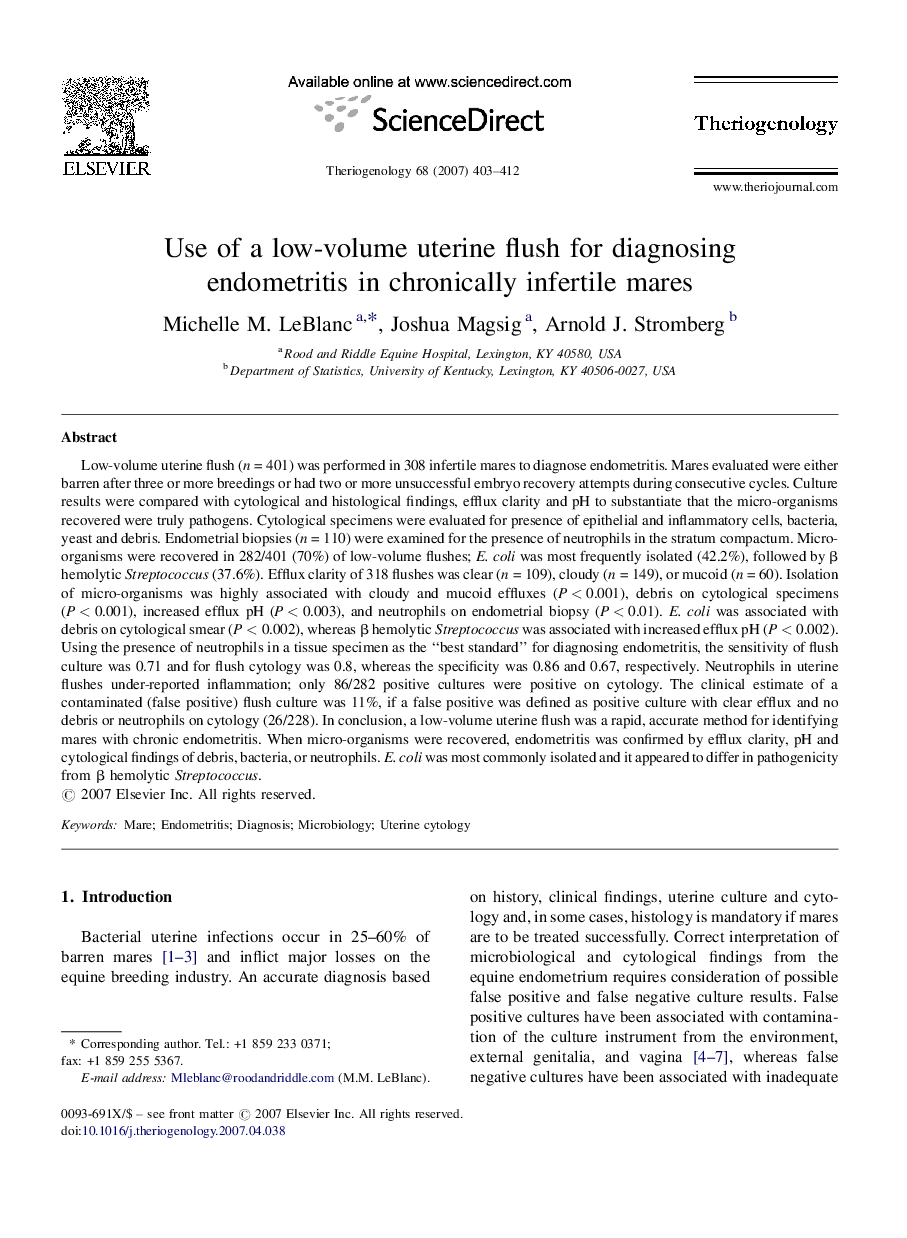| کد مقاله | کد نشریه | سال انتشار | مقاله انگلیسی | نسخه تمام متن |
|---|---|---|---|---|
| 2097294 | 1082210 | 2007 | 10 صفحه PDF | دانلود رایگان |

Low-volume uterine flush (n = 401) was performed in 308 infertile mares to diagnose endometritis. Mares evaluated were either barren after three or more breedings or had two or more unsuccessful embryo recovery attempts during consecutive cycles. Culture results were compared with cytological and histological findings, efflux clarity and pH to substantiate that the micro-organisms recovered were truly pathogens. Cytological specimens were evaluated for presence of epithelial and inflammatory cells, bacteria, yeast and debris. Endometrial biopsies (n = 110) were examined for the presence of neutrophils in the stratum compactum. Micro-organisms were recovered in 282/401 (70%) of low-volume flushes; E. coli was most frequently isolated (42.2%), followed by β hemolytic Streptococcus (37.6%). Efflux clarity of 318 flushes was clear (n = 109), cloudy (n = 149), or mucoid (n = 60). Isolation of micro-organisms was highly associated with cloudy and mucoid effluxes (P < 0.001), debris on cytological specimens (P < 0.001), increased efflux pH (P < 0.003), and neutrophils on endometrial biopsy (P < 0.01). E. coli was associated with debris on cytological smear (P < 0.002), whereas β hemolytic Streptococcus was associated with increased efflux pH (P < 0.002). Using the presence of neutrophils in a tissue specimen as the “best standard” for diagnosing endometritis, the sensitivity of flush culture was 0.71 and for flush cytology was 0.8, whereas the specificity was 0.86 and 0.67, respectively. Neutrophils in uterine flushes under-reported inflammation; only 86/282 positive cultures were positive on cytology. The clinical estimate of a contaminated (false positive) flush culture was 11%, if a false positive was defined as positive culture with clear efflux and no debris or neutrophils on cytology (26/228). In conclusion, a low-volume uterine flush was a rapid, accurate method for identifying mares with chronic endometritis. When micro-organisms were recovered, endometritis was confirmed by efflux clarity, pH and cytological findings of debris, bacteria, or neutrophils. E. coli was most commonly isolated and it appeared to differ in pathogenicity from β hemolytic Streptococcus.
Journal: Theriogenology - Volume 68, Issue 3, August 2007, Pages 403–412